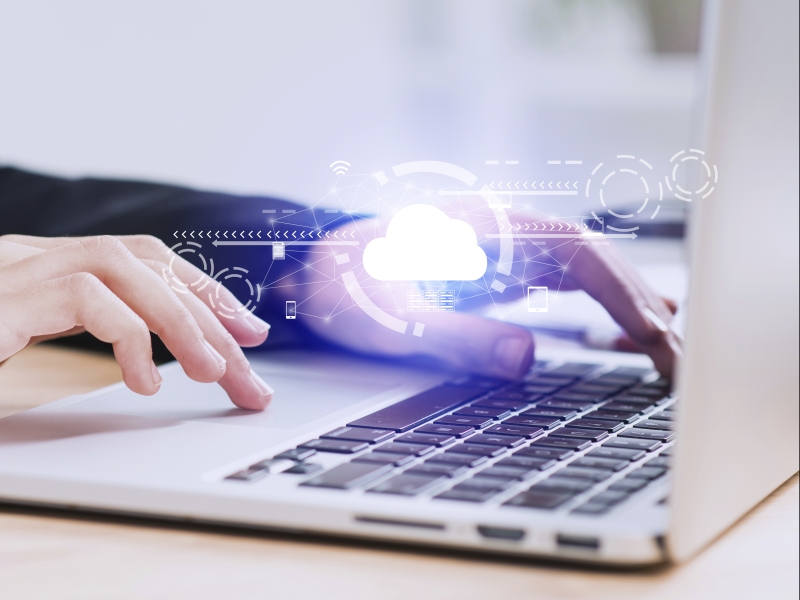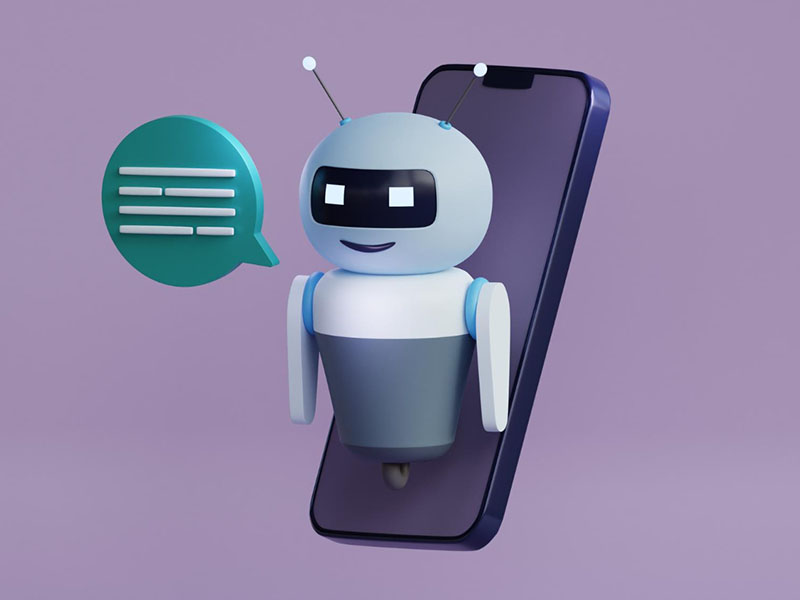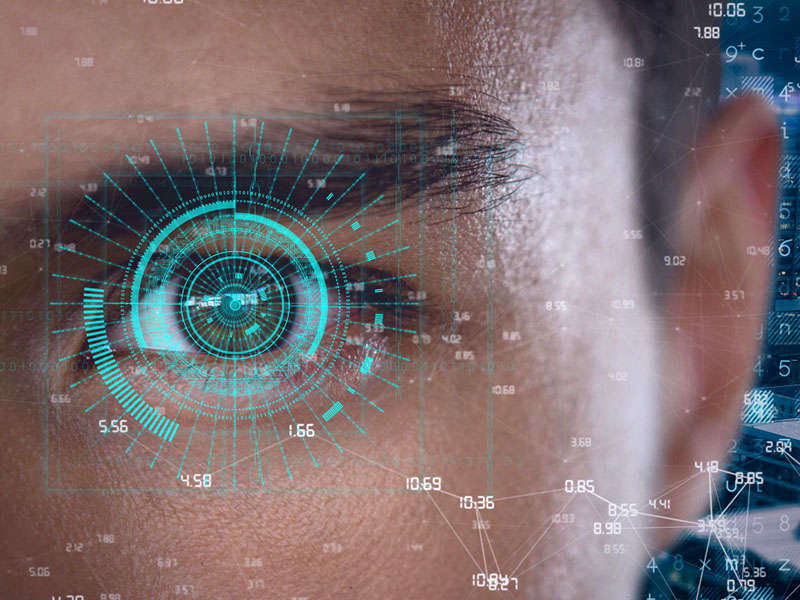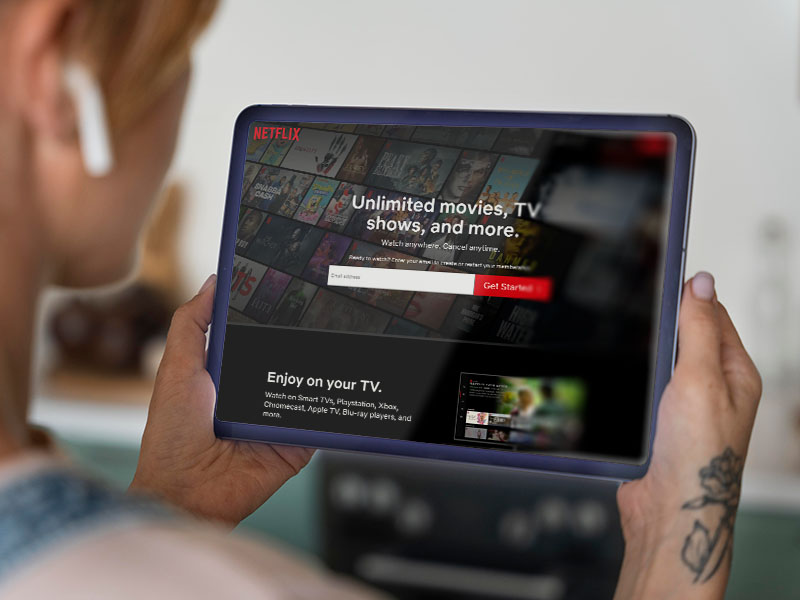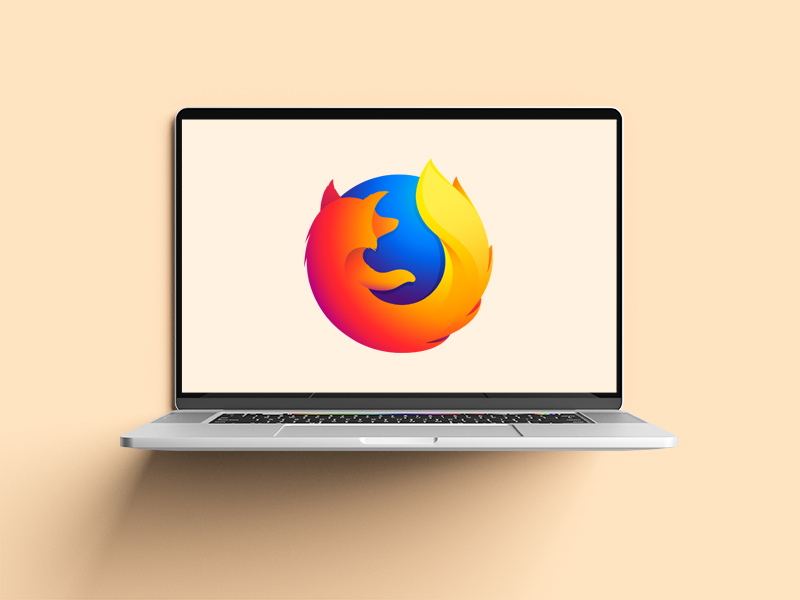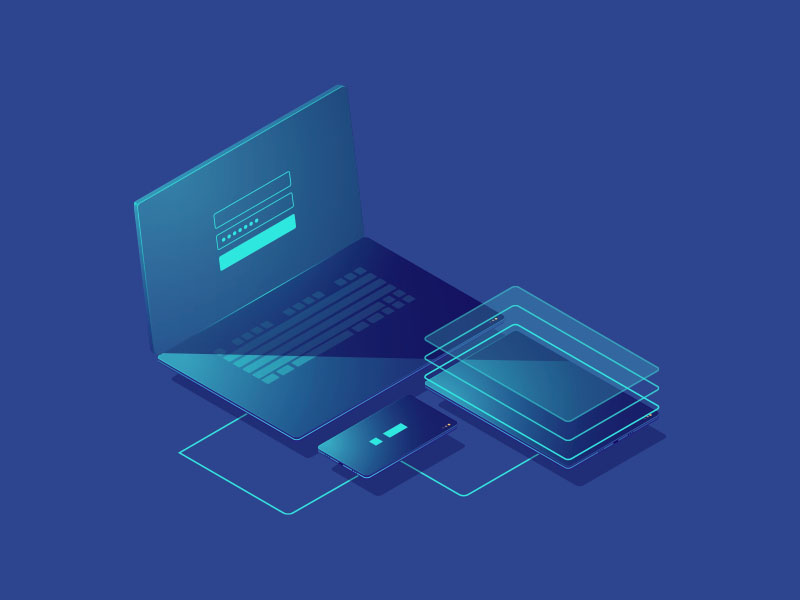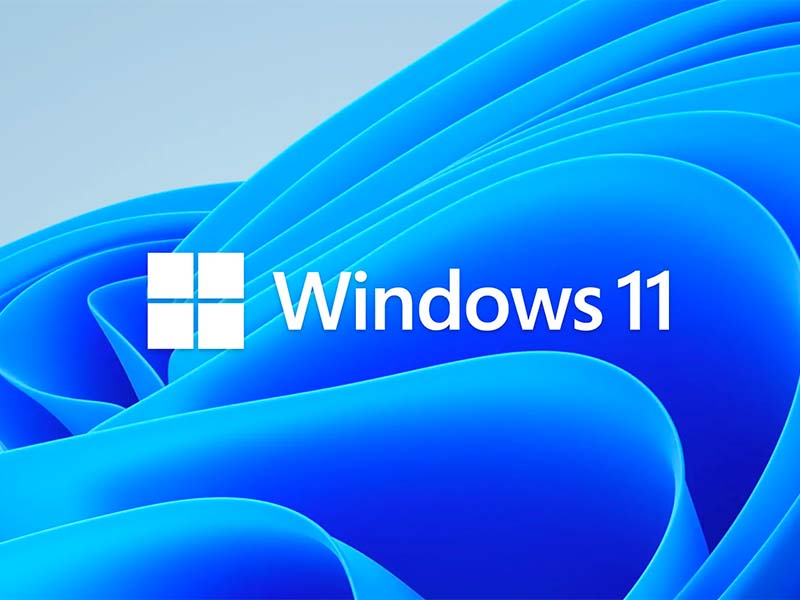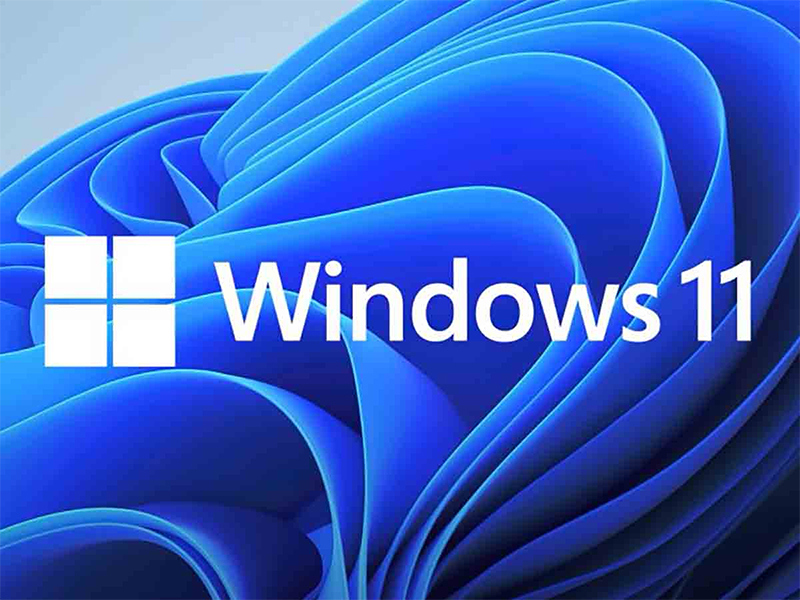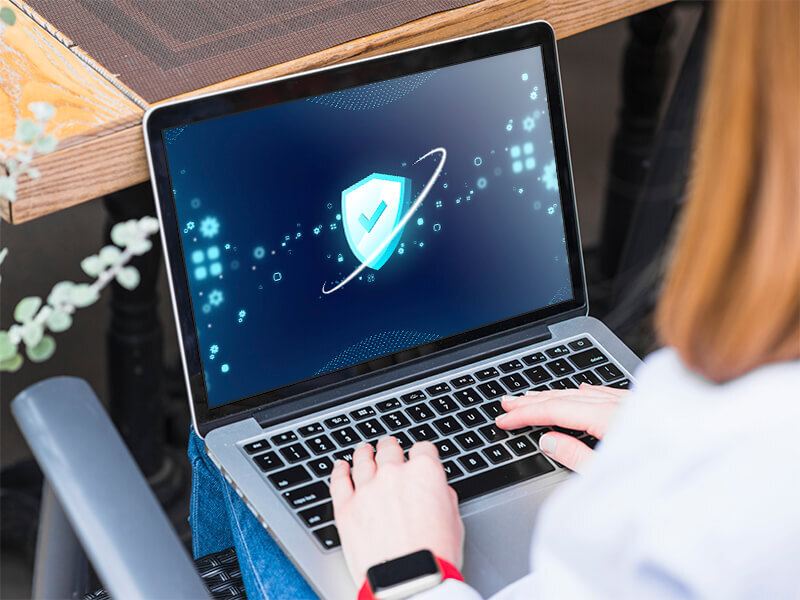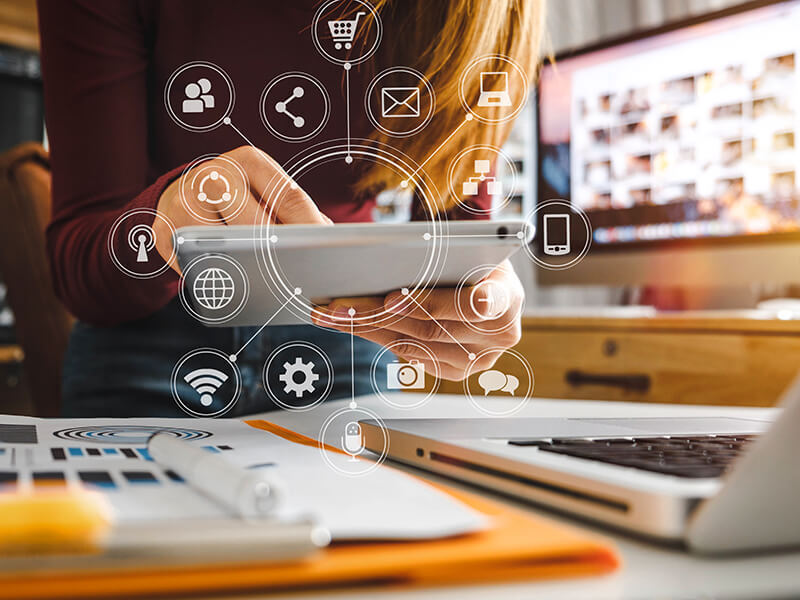What Can a Website Know About You When You Visit It?
02/04/2025Every time you visit a website, you leave behind a digital footprint. Even if you don’t fill out forms or accept cookies, sites can still collect surprising amounts of information. In this article, we explain what data you share unknowingly and how you can protect your online privacy. 1. Your public IP address Your public IP address acts like a license plate for your connection. It’s the first piece of data a site sees when you connect. This IP can reveal your Internet provider (ISP) and your approximate location. You can check your IP now to see what you’re exposing. 2. Approximate geolocation Using geolocation databases, your IP can be linked to a city or region. While not 100% accurate, this allows websites to tailor content, restrict access, or show local ads. 3. Browser and operating system Your browser reveals which OS you use, browser version, and other technical details. While this helps websites display content properly, it can also be used to build a unique fingerprint of your device. 4. Additional technical information Screen resolution Time zone System language Installed extensions (in some cases) This data can identify your device quite accurately—especially when combined. 5. Cookies, scripts and trackers If you accept cookies or interact with third-party scripts (like social media buttons), the site may track your behavior across different pages. This is common in online marketing. How can you protect yourself? Here are some basic steps: Use a VPN or proxy to hide your IP. Properly configure your browser’s privacy settings. Block third-party cookies and unnecessary scripts. Use privacy-focused browsers like Brave or Firefox. Remember, digital privacy starts with understanding the data you’re sharing. Tools like Cualesmiip.com let you instantly see what your connection reveals. Try it now and take control!
[ ... ]How can I hide my IP?
Accessing the Internet involves connecting our computer, smartphone, tablet, etc. to a communications server that is responsible for providing access to the network. This connection involves the identification and exchange of data about our identity, IP address, and online activities that are recorded forever as a trace of our navigation. Can I be tracked through my IP address? Yes, it is possible to trace an IP address and for those who consider privacy a priority, this is a major problem because, in addition to being exposed throughout the network, the increasingly intensive use of the Internet has led to this type of data becoming an object of interest for cybercriminals seeking personal or confidential information that can be used for their benefit. To safeguard against all this, there are several methods to hide the IP address, ensure our online privacy, improve our security on the Internet, and prevent anyone from knowing what pages we visit, the time we have spent on every connection, or what we are downloading. What are the advantages of hiding my IP? Apart from everything related to privacy and security already mentioned, hiding the IP offers different advantages for users in multiple circumstances: There are IP hiding services that prevent IP geolocation when we travel and allow us to connect to the network as if we were doing it from our own country, overcoming, for example, any network access limitations that may exist in the place where we are. We will be able to download files anonymously avoiding that the rest of the users can see our IP location. If our IP is not "in sight", the possible limitations and blockages of the Wi-Fi network and even of our ISP (Internet Service Provider) disappear. Thanks to the data encryption system of the most advanced IP hiding services, our vulnerability in connections to public Wi-Fi networks is minimized. When the system detects a location different from the real one, this can give us advantages to buy in online stores with different offers according to the country or to avoid the blocking of games, maps, and online game add-ons that may have restrictions on our location. How can I hide my IP? IP hiding is achieved through the use of specific services and tools to hide the IP and encrypt our traffic, those services allow us to hide the real communications we make during our navigation. Besides those techniques that are based on the modification of network protocols and require certain skills to carry them out, there are several technologies within the reach of all users: VPN or Virtual Private Network Proxy or Web proxy Tor Public Wifi How to hide the IP address with a VPN? VPNs are services that connect us to the Internet through intermediate servers, in which our original IP address is " masked " by the IP address of that secure server. This concealment ensures that anyone tracing our connection will only see the IP address and location of the VPN server, but not our own. In addition, to safeguard our activity on the network, VPNs use tunneling and data encryption, encrypting the information we exchange with the VPN server, hiding it, and preventing third parties from being able to read it during its transit. The security of VPN connections is determined by proprietary VPN protocols, based on different standards and encryption and authentication methods, which depend on each developer. The range of options is wide and this allows us to choose between, for example, options that prioritize speed over security, options that do the opposite, options with a greater or lesser degree of reliability, etc. VPN applications always run in the background and do not hinder browsing. How to use a proxy server to hide the IP address? Unlike VPN services, proxy servers focus their activity solely on hiding the IP, without performing any type of concealment on our network traffic or any other data that could reveal our identity. Proxy servers act as intermediaries between our device and the destination server to which they transmit our requests on our behalf. Therefore, our IP will be hidden and the only one they will see will be the proxy one. There are different types of proxy services, from the simplest ones that only help us to hide the IP to others with extra functionalities such as blocking cookies, scripts, and other files hosted on websites and sent to the user. Browsers or applications based on the HTTP protocol offer the manual proxy configuration function so that we can indicate the proxy web address and port to which we want to connect before browsing. In this way, any activity that we perform through that browser will always be routed to the proxy. Alternatively, you can also opt for the automatic proxy format that searches through DNS or DHCP for the URL from which to download the wpad.dat file that runs and allows the proxy connection with automatic authentication on your computer. How to hide your IP with Tor? Tor is a free software developed to ensure anonymous browsing of users on the Internet. To mask the IP Tor uses a network of volunteer computers or nodes through which it redirects our traffic and encrypts it before it reaches its destination. At least this redirection goes through three of these nodes, achieving repetitive re-encryptions so that any possible clue about our identity disappears. In this process, Tor assigns a random and geographically different IP to our connection so that the location by third parties is impossible (if you are curious to know the IP you have been assigned you can check it through our tool). This system allows different configurations depending on whether we are using a firewall, if our ISP is blocking Tor connections or if we navigate through proxy for example. Can I hide my IP with a public Wi-Fi connection? The answer is yes. A public Wi-Fi network can also be used to hide our IP address, although if we do not have it constantly at our disposal, the IP hiding is limited to the time we have access to a public network. As this type of network is a connection shared by many other people, this makes it impossible to trace a particular user or identify them on the destination server. However, it is precisely this general access that also makes us more vulnerable. And although through a connection to a public Wi-Fi we will solve the issue of IP hiding, security will never be total, because being an open network, we can be exposed to the will of hackers and other threats, including malware and viruses. And if I want to hide my IP address, how can I change it? It may also be the case that instead of masking the IP all we need to do is change our IP address at a given moment. Then, the solution is as simple as disconnecting the modem from the power supply and restarting it after a few minutes. In that time, if your IP address is dynamic (you can check it through the network connections tab on your computer), it will be deleted and your Internet provider will give you a new one. To make sure that everything went well, we recommend doing something as simple as writing down the IP address before turning off the router and checking it again once it is up and running again. Another possible way to achieve the same result if you have a smartphone with a data plan is to turn this device into a wireless access point to which you can connect your computer, thus hiding your usual connection. There are many options to hide the IP or to change it and now that you know how each of them works you will be able to decide which one suits you best.
[ ... ]What is an IP Address and What Is It For?
30/03/2025The IP address is one of the most fundamental parts of how the Internet works, yet many users don’t know exactly what it is, how it functions, or what information it reveals. In this article, we’ll explain in detail what an IP address is, what it’s used for, the different types that exist, and how you can check your public IP instantly. What is an IP address? IP stands for Internet Protocol. An IP address is a unique numeric identifier assigned to each device connected to a network that uses this protocol. It’s similar to a postal address, but in the digital world: without it, data wouldn’t know where to go. For example, when you type www.google.com into your browser, your device needs to send a request to Google’s server. That request is routed using the server’s IP address. Likewise, that server needs your IP to respond with the right content. This exchange is at the heart of how the Internet works. Types of IP addresses There are several ways to categorize IP addresses. Let’s break down the most important ones: Public vs. Private IP Public IP: This is the IP that identifies your network on the Internet. All devices within your home (computers, phones, smart TVs) share this public IP when accessing websites. This is the IP address you can see at Cualesmiip.com. Private IP: These are internal IPs assigned by your router to devices in your home network. For example, your laptop might have the IP 192.168.1.5 on your Wi-Fi network. Dynamic vs. Static IP Dynamic IP: This address changes periodically. Most home users have a dynamic IP, which is assigned automatically by their Internet provider. Static IP: This is a fixed IP that does not change. It’s commonly used for servers and remote access setups. IPv4 vs. IPv6 There are two main versions of the IP protocol in use: IPv4: This is the most widely used version, based on 32-bit numbers, which allows for around 4.3 billion unique addresses (example: 192.0.2.1). IPv6: This newer version was developed to deal with the exhaustion of IPv4 addresses. It uses 128-bit addresses, enabling a virtually limitless number of IPs (example: 2001:0db8:85a3:0000:0000:8a2e:0370:7334). What is an IP address used for? An IP address is essential for digital communication. It serves several critical functions: Routing information: Just like a letter needs a destination address, data packets need an IP to reach the correct device. Identifying your connection: Websites and online services see your IP and use it to determine your location, language preference, and sometimes to control access. Geolocation: Although not always precise, IP addresses can reveal your approximate city or country. This has implications for privacy. What does your IP reveal about you? Your public IP can expose information such as: Your approximate location (city, region, or country). Your Internet Service Provider (ISP). The type of connection you’re using (mobile, fiber, DSL, etc.). This means that websites can learn quite a bit about you without using cookies or forms. If you care about privacy, it’s essential to understand what your IP reveals. How can you check your public IP address? It’s very easy. Just visit Cualesmiip.com and you’ll instantly see your public IP along with additional information, such as: Approximate geolocation. Name of your ISP. Your browser and operating system details. Port status (via the built-in port test tool). Real-life situations where you need to know your IP Here are some everyday scenarios where knowing your IP is useful: Setting up a security camera: You’ll need the device’s IP to access its settings. Remote desktop access: To connect to your home PC from another location, you must know its public IP. Using a VPN: You can verify if your VPN is working properly by checking whether your IP changes. Gaming or hosting a server: Many multiplayer games or local servers require you to share your IP with other players. Can you hide your IP address? Yes. There are several ways to hide or change your public IP address for privacy or to bypass restrictions: VPN (Virtual Private Network): Routes your traffic through another country and hides your real IP. Proxy server: Similar to a VPN, though typically less secure and more limited. Tor browser: Offers anonymous browsing, though at the cost of speed. However, none of these solutions are perfect. Some websites may detect VPNs or proxies and block access. For best results, combine privacy tools with mindful browsing habits. What we have learnt at this article? Your IP address is the starting point of any Internet activity. Understanding what it is, how it works, and how to find it gives you more control over your online privacy and security. Whether you want to check if your geolocation is accurate, detect network issues, or verify if your VPN is active, knowing your IP address is a basic and valuable skill for every Internet user. 👉 Want to see your IP right now? Visit Cualesmiip.com and check your public IP address instantly, with no installation or registration required.
[ ... ]Why Do You Need a VPN Service to Protect Your Digital Identity?
25/03/2025Digital tracking, cybercriminals, and exposure of personal data are now more than ever real risks for anyone who connects to the internet. Every time we do so, we leave behind a trail of data that can be used by third parties and lead to digital identity theft, unauthorized account access, or even the loss of sensitive data, among other things. This is why protecting online privacy should not be a concern exclusive to the corporate world. Whether you work with customer data, check your personal email, or use social media, we are all vulnerable to some type of attack or data breach. For this reason, more and more people are turning to solutions like a VPN service to keep their information safe while browsing the internet. This type of service is specifically designed to encrypt connections and prevent third parties from accessing or tracking the data being transmitted, whether at home, using mobile data, or connecting to Wi-Fi networks — even public ones, where what seems like a fast and free connection can actually be an entry point for someone with malicious intent. In fact, in these cases, the attacker doesn't even need advanced knowledge. There are tools readily available online that allow data packet interception and spying without leaving a trace. The Value of Our Digital Footprint Exposure isn’t always visible, and often cybercriminals and digital trackers silently collect information about our location, browsing habits, and the platforms we use. This data is not only sold to third parties for advertising purposes but can also end up in vulnerable or leaked databases, making any user — personal or professional — a potential target. All this information is a valuable asset, and as such, it should be protected with a basic cybersecurity structure, in which a VPN helps us take control of our digital footprint. Key Benefits of Using a VPN A VPN (Virtual Private Network) is a tool that encrypts traffic between your device and the internet and acts as a shield, ensuring that the information you send and receive cannot be read or intercepted by third parties: End-to-end encryption: All data leaving your computer or phone travels through a secure tunnel, inaccessible to data miners and hackers. Hiding your real IP address: By browsing through secure servers, your original IP is masked, making tracking more difficult and enhancing online anonymity. Protection on public networks: You can safely connect to Wi-Fi in airports, cafes, universities, coworking spaces, hospitals, etc., without exposing your professional information. Reduced tracking from cookies and invisible scripts: By changing your virtual location, encrypting data, and routing it through secure servers, much of the commercial or malicious tracking is blocked. How Can I Know If I’ve Been Hacked — and How Can I Protect Myself? It’s not just about prevention — it’s about ensuring that what we do online, now and always, remains our business. That’s why protecting real-time traffic alone is not enough. We should regularly change all our passwords, although if our data has already been leaked, there may be little we can do. For this reason, many users complement their VPN with an online privacy service to track whether their information has been compromised in any known data breach or vulnerability. These solutions continuously monitor whether our digital identity has suffered any security breach and has been compromised. Moreover, it’s a simple way to find out if your passwords, email addresses, or confidential data have appeared in databases exposed on the internet. Online privacy services alert us to identity theft attempts, unauthorized use of personal data, and the most advanced solutions also allow us to stop any detected leak and remove exposed sensitive information, reducing the chance of abuse. Clearly, as digitalization progresses, the need to protect ourselves grows too — and solutions like VPNs and online privacy services can make the difference between keeping our connections secure and our digital identity protected, or being exposed.
[ ... ]What is IP Telephony and Its Impact on Businesses
24/03/2025Nowadays, companies are constantly looking for ways to optimize their communications and reduce operational costs. That’s why IP telephony has emerged as a solution to achieve these goals, allowing organizations to improve their efficiency and flexibility. But what exactly is IP telephony and how can it benefit your business? In this article, we’ll take an in-depth look at how it works and its advantages. What is IP Telephony? IP telephony (Internet Protocol) is a communication system that enables voice and data transmission over the internet, instead of using traditional telephone networks. This means companies can make high-quality calls using their internet connection, eliminating the need for conventional phone lines and significantly reducing telecommunication costs. Unlike analog telephony, which relies on physical infrastructures like copper wires, IP telephony converts voice signals into digital data and transmits them in real time through the network. This offers greater flexibility and scalability, allowing businesses to adapt their communications without physical limitations. How Does IP Telephony Work in Businesses? For an IP telephony system to be efficient and successful, several components come into play. First, there are IP phones and softphones, which allow calls to be made from physical devices or apps on computers and smartphones by connecting to the internet—eliminating the need for traditional lines. The IP PBX or virtual switchboard is another key component. It manages internal and external calls within the company, offering features such as call forwarding, call recording, and voicemail, optimizing internal communication. It’s important to highlight that a stable and fast internet connection is essential to ensure clear and uninterrupted calls. Therefore, it’s crucial to have sufficient bandwidth. On the other hand, VoIP servers process the calls, ensuring data travels efficiently between users, while signaling protocols like SIP manage how calls are initiated and ended. Thanks to these components, companies can enjoy more efficient, flexible, and cost-effective communication—regardless of where their employees are—enhancing productivity and global connectivity. Benefits of IP Telephony for Businesses IP telephony is a game changer for businesses because it allows calls to be made over the internet instead of using traditional phone lines, offering numerous advantages. Cost Savings and Greater Flexibility The first and most obvious benefit is cost savings. International calls, for example, are much cheaper with IP telephony. Moreover, this technology doesn’t tie you to an office or fixed number. Employees can make and receive calls from anywhere, as long as they have internet access. Scalability and Advanced Features This means that if your company grows and you need more lines, you can add them without expensive installations, thanks to its flexibility. Additionally, it includes many advanced features that simplify workflows—like call recording, video conferencing, or receiving voicemails directly via email. Improved Call Quality With a good internet connection, call quality improves greatly. No more interference or dropped calls. IP telephony offers clearer calls with less latency, making both internal and external communication much smoother. Integration with Existing Systems Another key benefit is that IP telephony easily integrates with other systems. For example, if you're already using tools like CRMs, management software, or chat platforms, you can connect everything to your phone system. This simplifies operations and improves overall efficiency since all systems work together. How to Implement IP Telephony in Your Business To adopt IP telephony in a business, it’s important to follow a proper process to ensure a smooth transition—here’s what you need to do: Analyze communication needs: Evaluate how many lines you need and what features are essential for your business. Choose a VoIP provider: Select a reliable provider that ensures security, call quality, and solid technical support. Get the necessary equipment: Depending on the solution, you may need to purchase IP phones or use softphone applications. Optimize your internet network: Make sure your company has enough bandwidth to handle both voice and data traffic. Train your staff: Employees need to understand how to use and take full advantage of the new system. IP telephony has become an essential tool for modern businesses, offering an efficient, flexible, and cost-effective alternative to traditional phone systems.
[ ... ]How Data Analysis is Transforming Cryptocurrency Investments?
14/03/2025Cryptocurrency investments have transformed the financial world, offering new opportunities with a high level of volatility, which can result in significant gains or losses within minutes. In this scenario, data analysis has become an essential tool for investors seeking to make informed decisions and minimize risks. Thanks to data science, it is possible to identify market behavior patterns, anticipate trends, and optimize investment strategies. The Role of Data Analysis in Cryptocurrency Investments The cryptocurrency market operates 24/7 and is influenced by multiple factors, such as economic events, government regulations, and investor sentiment on social media. Given this dynamic landscape, data science enables the analysis of large volumes of information in real-time and helps detect strategic opportunities. 1- Predicting Market Trends Time series analysis and machine learning models help forecast cryptocurrency price movements with greater accuracy. By studying historical data, these models identify patterns that may indicate potential price increases or declines, allowing investors to anticipate market changes. 2- Market Sentiment Analysis Social media, forums, and news can significantly influence cryptocurrency prices. Through natural language processing techniques, it is possible to analyze millions of posts to measure the general sentiment of the market and anticipate changes in demand. This allows investors to adjust their strategies in real-time, seizing opportunities before market movements become apparent. 3- Optimizing Trading Strategies Many traders use advanced algorithms based on artificial intelligence to automate their operations and react more quickly to market fluctuations. These systems can execute transactions in fractions of a second, taking advantage of opportunities that would be impossible to detect manually. 4- Risk Assessment and Security Data analysis is also crucial for detecting suspicious behavior on the network and preventing fraud or cyberattacks. By identifying unusual transaction patterns, investors can protect their assets and avoid unexpected losses. 5- Liquidity and Trading Volume Analysis A fundamental aspect of cryptocurrency investments is liquidity, which refers to the ease of buying or selling assets without significantly affecting their price. Through data analysis, it is possible to monitor market depth and evaluate whether a cryptocurrency has sufficient trading volume to execute transactions smoothly. 6- Data-Driven Portfolio Diversification Data science also helps optimize cryptocurrency investment diversification. Through advanced statistical analysis, investors can identify assets with lower correlation to each other, reducing the impact of volatility and maximizing long-term profitability. The Importance of Data Science Training To fully leverage these tools, it is essential to have knowledge in data analysis, machine learning, and big data. The data science training by TripleTen provides professionals with the necessary skills to understand market behavior and develop data-driven strategies. With a practical and applied approach, this training enables investors to improve their analytical capabilities and make more informed decisions. Ultimately, data analysis is transforming the way cryptocurrency investments are managed. Thanks to advanced prediction tools, sentiment analysis, and automation, investors can reduce risks and better seize opportunities for success in a highly volatile market. If you are interested in enhancing your knowledge in this field and taking advantage of the benefits that data science offers in the financial world, learn more at tripleten.mx. Developing data analysis skills will not only allow you to make more informed decisions but also give you a competitive advantage in a constantly evolving sector.
[ ... ]Can someone find out your IP through WhatsApp? Myths and realities about privacy on WhatsApp
10/03/2025WhatsApp is one of the most widely used applications in the world for communication, but it is also one of the most questioned in terms of security and privacy. Among users' main concerns is the possibility that someone could discover their IP address through the app and hack their account. If you want to learn more about WhatsApp, its privacy, and ways it can be hacked, you can do so in this article by Droiders. In this article, we also clarify the myth about whether your IP can be visible to others when chatting, calling, or sharing files on the platform. What is an IP address, and why is it important in WhatsApp? An IP address is a unique identifier assigned to every device connected to the Internet. This address allows data to travel between your mobile and WhatsApp servers. Without it, communication would be impossible. However, when you chat, make video calls, or share files on WhatsApp, your IP is not directly visible to your contacts. Since WhatsApp is a centralized service, it acts as an intermediary, meaning your messages travel to WhatsApp servers before reaching the recipient. This adds a layer of privacy. Common myths: Does WhatsApp reveal your IP? Some users believe that sending a message or a multimedia file allows the recipient to see their IP, which is false. However, there are specific situations where the IP may be exposed or indirectly tracked: External links: If you share a link and the recipient opens it, the linked website can register their IP and, in some cases, deduce yours if the link was customized. Video calls: Although WhatsApp claims that calls and video calls are end-to-end encrypted, in specific technical scenarios (with insecure networks or malicious apps), it might be possible to track the public IP of both devices. Shared files: When downloading a file from an external server (outside WhatsApp), the server can register the IP of the person downloading it. How to protect your IP when using WhatsApp? For users concerned about their privacy, reinforcing security while using the app is becoming easier with WhatsApp's new features: Use a VPN: By masking your real IP, any data flowing to or from WhatsApp will first pass through the VPN server, hiding your actual location. Avoid suspicious shortened links: Many URL shortener services collect IP addresses and browser data. Disable automatic file downloads: This prevents external resources from being loaded automatically. Monitor permissions and connections: On rooted devices or those with third-party apps, it is easier for a spying application to intercept the connection. What does WhatsApp know about your IP? Although your contacts cannot see your IP directly, WhatsApp can. The platform records the IP of each connected device, allowing it to detect suspicious patterns (e.g., connections from unusual locations) and apply security measures such as additional verifications. Conclusion Due to its centralized architecture, WhatsApp does not directly expose your IP to your contacts. However, this does not mean it is impossible to track it in specific situations. If privacy is a priority, using tools like VPNs, reviewing the links you share, and controlling app permissions are essential steps. Ultimately, understanding how your IP address works and its relationship with WhatsApp is key to better protecting your data.
[ ... ]IP Loggers: How They Work and How to Protect Yourself
10/09/2024The IP address or Internet Protocol address is a unique identifier assigned to each device connected to a network. Although its primary purpose is to facilitate connection and authentication on the Internet, cybercriminals have found ways to exploit this information through tools known as IP loggers. These tools track and record users' IP addresses when they interact with certain links or web pages prepared for this purpose. IP loggers allow attackers to obtain valuable data such as the general location of the device and the user's online activity. Although an IP address does not reveal direct personal information, its collection can be used to execute cyberattacks, such as identity theft or phishing campaigns. Cybercriminals often use social engineering techniques, such as fake emails or deceptive links, to lure victims to malicious websites that capture their IP address. Once they have obtained the IP address, cybercriminals can launch distributed denial of service (DDoS) attacks, flooding the victim's system with multiple requests until it becomes inaccessible. They can also disguise their identity by using the victim's IP to carry out illicit activities, making detection difficult. How to protect yourself from IP loggers To protect yourself from IP loggers, it is essential to avoid clicking on suspicious links and to use a virtual private network (VPN). VPNs hide the real IP address of the device, improving privacy. In addition, it is recommended to keep security systems up to date, properly configure firewalls and use strong passwords. With these measures, users can reduce the risk of falling victim to malicious attacks based on the capture of their IP address. These measures are essential to reduce the risk of falling victim to malicious attacks based on the capture of IP addresses. By following these recommendations, users can mitigate threats such as phishing, distributed denial of service (DDoS) attacks, and identity theft, achieving safer browsing.
[ ... ]A study reveals the main areas of investment by companies in digitalization for the coming years
03/09/2024According to a recent study by Logitech and The Futurum Group, companies are expected to invest more than €10 billion in artificial intelligence (AI) over the next three years. The research, published this Thursday, highlights that top investment priorities will include generative AI and predictive analytics, technologies that are gaining ground due to their potential to transform the work environment. Generative artificial intelligence (AI) and predictive analytics, top investment priorities The report points out that companies are at a crossroads. In the coming years, generative AI and predictive analytics will be key areas of investment to improve both productivity and employee satisfaction. With a special focus on hybrid and remote work environments, 70% of workers believe that the current technology provided by companies does not live up to their expectations. For their part, only 29% of employees declare themselves completely satisfied with the technological tools they use in their workplace, a worrying decrease compared to the 39% registered in 2021. Fostering collaborative and equitable environments will be key to retaining talent Nolwenn Le Querré, Category Marketing Personal Workspace for Southern Europe at Logitech, highlights that companies that want to attract and retain talent must focus on encouraging the use of innovative tools. “Investing in advanced technologies and creating an optimal user experience is not only a competitive advantage, but a necessity for the future of work,” adds Le Querré.
[ ... ]Google Chrome Introduces three new memory saving modes
07/06/2024Google has started tests to improve resource management in its Chrome browser, introducing three new memory saving modes. These options allow users to configure how and when inactive tabs are disabled, offering greater control over browser performance based on their preferences and the capabilities of their devices. These new features are another step forward from those introduced more than a year ago, when Chrome incorporated energy and memory saving modes to reduce resource consumption, limiting background activity and visual effects. These options are available in the “Performance” settings tab of the browser. Recently, Google has gone one step further with the introduction of three levels of customization in memory saving, aimed at further optimizing the use of the browser. Moderate, balanced and maximum memory savings The new memory saving modes that Google is testing in Chrome's Canary channel are divided into three categories: Moderate, Balanced, and Maximum. Moderate Savings: Tabs deactivate after an extended period of inactivity, allowing a balance between performance and accessibility. Balanced Savings: The tabs are deactivated after a moderate time of inactivity, offering a compromise between resource savings and ease of use. Maximum Savings: Also known as Memory Saver Mode Aggressiveness, this mode deactivates tabs after a short period of inactivity, maximizing memory savings, but requiring tab reloading more frequently. Visual indicator of inactive tabs in Google Chrome In addition to these new modes, Google also plans to introduce a visual indicator so that users can easily identify which tabs are active and inactive and which consume more and less resources, to facilitate their management and improve the user experience when browsing with multiple tabs open. With these new tools, Google seeks to offer Chrome users greater flexibility and control over the browser's performance, adapting to the diverse needs of their devices and browsing habits.
[ ... ]Android 15 is committed to security and user experience powered by AI
23/05/2024Google has announced in Google I/O 2024 conference, new and innovative functionalities powered by Artificial Intelligence (AI) for its next operating system, Android 15. As the firm's experts have explained, the improvements, focused on optimizing the user experience also seeks to guarantee data protection at all stages of the device's life cycle: before, during and after a theft. Thus, one of the highlights of the presentation was the presentation of these new security measures designed to deter device theft and which include: Factory reset update: If a thief attempts to reset a stolen device, they will need the credentials of the associated Google account, making resale impossible. Private space: This new feature will allow you to create a hidden and locked area with a separate PIN, protecting sensitive information even if the device falls into the wrong hands. Improved authentication: Accessing critical features such as 'Find My Device' or modifying important settings in the new Android 15 operating system will require biometric authentication, increasing the difficulty for thieves to tamper with the device. Additionally, security features such as theft detection and automatic screen locking are coming to devices running Android 10 and later later this year. Innovations from Android 15 in user experience Android 15 also brings significant improvements to the user experience: Smoother transitions: With a redesigned interface and smoother transitions, users will enjoy more intuitive navigation. Multitasking improvements: On large-screen devices, you can pin the taskbar to quickly switch between apps, and store app combinations on a split screen for quick access. Screen sharing controls: Android 15 will include new notifications that automatically hide during screen sharing, and the ability to share only the content of a specific app, improving user privacy. Defense Against Cyber Attacks Google has also introduced tools to protect users from cyberattacks and espionage: Unencrypted connection notifications: The system will alert users when their network connection is not encrypted, reducing the risk of criminals intercepting communications. Detection of fraudulent cell stations: Android 15 will protect at-risk users, such as journalists and dissidents, by alerting them to possible surveillance tools that record their location. Google Play Protect Google Play Protect will also be improved in Android 15 with the integration of AI, capable of identifying malicious applications in real time by analyzing permissions and suspicious behavior.
[ ... ]OpenAI introduces GPT-4 in the free version of ChatGPT with capacity to generate content from text, voice, and images.
21/05/2024OpenAI has launched its latest Artificial Intelligence model, GPT-4o, in the free version of ChatGPT. This "limited access" release marks an innovative coexistence between the new GPT-4o and the well-known GPT-3.5, significantly expanding the tool's capabilities. What is GPT-4o and what does It offer? The GPT-4o model, with the suffix 'o' standing for 'omini', represents a significant advancement by natively supporting multiple input modalities. This means it can understand and generate content from text, audio, and images, with a response time of only 232 milliseconds. Iterative and free implementation OpenAI has announced that GPT-4o will be implemented "iteratively" and will be available for free to ChatGPT Plus users first. Additionally, a new alpha version of the voice modality with GPT-4o is expected to arrive for this subscription in the coming weeks. How to access GPT-4o in free ChatGPT Users can select GPT-4o from the options menu located at the end of the toolbar in the ChatGPT interface. By clicking the "Change Model" button, two options are presented: GPT-3.5 and GPT-4o. Limitations and benefits of the Free Version In the free version of ChatGPT, users have limited access to advanced functionalities such as data analysis, file uploads, image recognition, internet browsing, and the creation of custom GPTs. Although these tools are more restricted compared to the paid subscription, the inclusion of GPT-4o adds significant value. OpenAI has clarified that the use of GPT-4o in the free version comes with restrictions on the number of messages that can be sent, which vary according to current demand and usage. When GPT-4o is not available, the tool will revert to using GPT-3.5, ensuring continuity of service. User testing and experience According to Europa Press, when attempting to add a second file, such as a PDF, in the free version, ChatGPT prompts the user to upgrade to ChatGPT Plus to continue using these advanced functions. This demonstrates the clear differences between the free and paid plans but also highlights the flexibility that OpenAI is offering with GPT-4o.
[ ... ]“Brokewell" the new Trojan disguised as a Chrome update that steals banking data
07/05/2024Cybersecurity researchers have identified a new Trojan that poses a serious threat to Android device users, especially those who bank on their phones. The malware, known as "Brokewell", masquerades as a Google Chrome update, allowing cybercriminals to gain remote access to sensitive information. Overlay attacks The discovery was made by security firm ThreatFabric, which has been following the development of this mobile Trojan. According to their report, Brokewell uses overlay attacks to trick users. The technique involves creating a fake screen that is placed on top of a legitimate application, allowing attackers to capture users' access credentials without them realizing it. Additionally, malware can steal session cookies and send them to a command and control (C2) server, giving attackers greater control over the infected device.Once Brokewell manages to infiltrate a device, it can carry out a series of malicious actions, such as screen casting to capture keystrokes and data displayed in open applications. It can also spy on the device, collecting information such as call history, geolocation, and audio recordings. A trojan in constant evolution The threat is especially worrying because the Trojan is constantly evolving. According to ThreatFabric, the Brokewell Cyber Labs repository adds commands and functionality almost daily. The source code includes tools to bypass Android 13+ restrictions, allowing attackers to bypass the operating system's security measures and ultimately compromise the security of users.One clue to Brokewell's developer is the signature "Baron Samedit," which appears in the malware's source code and other places related to its promotion. This person or group is believed to have been active for at least two years, and is known to provide tools to check stolen accounts. Its presence in clandestine channels suggests that the Trojan could gain popularity among other cybercriminals, increasing its reach and the risk of attacks on clients of financial institutions. Malware with risk for the banking sector Cybersecurity experts warn that Brokewell poses a significant risk to the banking sector and that it is essential that Android users stay alert for suspicious updates and have appropriate security measures in place to prevent fraud and the loss of sensitive information.
[ ... ]What is Worldcoin and what does scanning the iris involve?
04/03/2024Worldcoin was introduced in summer of 2023 as a revolutionary project with the mission of creating a 100% secure digital identity, essentially a kind of fortified "digital passport," based on the verification of a unique and non-transferable element inherent to each human being—the iris. According to its developers, World ID will help distinguish human online activity from that generated by machines. In the first phase of the project, the creation of this secure digital identity is planned for 2 billion humans. To make this possible, Worldcoin has called on the global population to scan their iris. In return, Worldcoin compensates participants with a few tokens of its successful cryptocurrency, WLD, which has quadrupled in value within a few weeks of its initial launch. The payment in WLD tokens is not coincidental; it is part of Worldcoin's strategy, aiming to leverage the new digital passports to create a comprehensive ecosystem that provides universal and equitable access to advanced financial services for the entire global population. To achieve this, they encourage "iris sellers" to use the Worldcoin cryptocurrency on its fee-free blockchain, unlike Bitcoin, Ethereum, or other cryptocurrencies that do charge transaction fees. How does Worldcoin work? Worldcoin aims to address the issues of bots, rapid creation of fake identities, and content with artificial intelligence. It is designed, according to its developers, to provide every individual in the world with a unique digital identification. Additionally, Worldcoin promises to ensure the financial inclusion of each person in a fair and equitable ecosystem through a universal basic income. Users receive this income in exchange for allowing their iris to be scanned. To create the secure digital passport with Worldcoin, users must undergo an iris scan, which serves as proof of humanity and a unique identity on the blockchain. This process ensures that the individual on the other side of that identity is a human and not a fake profile created with artificial intelligence. In pursuit of the success of their proposal, the company offers users a small amount of their own Worldcoin tokens in exchange for iris scanning. The initial incentive of receiving free cryptocurrency, in the form of a universal basic income, is emphasized by Worldcoin advocates as the basis for the inclusive and universal nature of their initiative. This approach allows anyone to scan their iris, and the WLD tokens received in return can assist people without access to traditional financial services in starting to save and invest. How to Scan the Iris with Worldcoin? The registration process with Worldcoin involves scanning the iris with an orb, the central hardware device of Worldcoin developed by Tools for Humanity. The orb is spherical and processes all the information. Currently, Worldcoin has installed orbs in different countries, including Spain, where users can scan their iris in exchange for Worldcoins. To do this, it is necessary to download the Worldcoin mobile application, World ID, generate a QR code with it, and display it in front of the orb. The orb, upon recognizing it, will scan the user's iris, while a Worldcoin collaborator remotely oversees the operation. The orb takes less than a minute to perform the scan and validate the subject's identity. In exchange for their iris, the user receives a unique number called "IrisHash" and a cryptographic wallet with Worldcoins. "This digital passport is accepted as proof of unique humanity, which people can use in the digital world without the need to share any other data," assure its developers. What happens with my scanned iris in exchange for Worldcoins? Once the iris scan is completed, and digital identity is granted to the user, Worldcoin assures that the orb quickly eliminates the images unless the user requests their preservation. Only the set of numbers called "IrisHash" is stored for identification, without any additional biometric data. Worldcoin also commits to ensuring that users share only the necessary information they wish to share, providing verification options through linked devices or the additional facial authentication orb for high-security cases. Despite these commitments, the collection of biometric data through iris scanning for the unique proof of humanity continues to raise significant questions regarding privacy and information security. Some countries such as Brazil, France, India, or Kenya have halted Worldcoin's iris scanning. How much do you get paid for scanning your iris? Worldcoin pays 25 WLD for scanning your iris, which, according to the cryptocurrency's exchange rate in February 2024, has translated to an average of between 50 and almost €160 for iris sellers, depending on the value of Worldcoin on the day they scanned their iris. At the beginning of February, the value of each WLD unit was around two euros, and by the end of the month, it had risen to nearly seven euros. What can I spend my WLD on? 'Iris sellers' have the freedom to use their Worldcoins from the moment they receive them. They can exchange the payment for other cryptocurrencies, withdraw them in euros from a specialized ATM, or hold onto the tokens in the hope of an increase in their value. Additionally, WLD payments are already accepted on platforms such as Discord, Shopify, Minecraft, Telegram, Mercado Libre, or Reddit, among other places. Who is behind Worldcoin? Worldcoin bears the stamp of two innovative minds: Sam Altman and Alex Blania. Altman is the CEO of OpenAI and a key figure in artificial intelligence development, leading projects like ChatGPT. Blania, on the other hand, is the co-founder of Tools For Humanity, contributing his experience in creating technological tools for a more equitable economic system to this new and successful cryptocurrency.
[ ... ]What is Bitcoin Halving and how does it affect the cryptocurrency?
25/02/2024The term "Halving" in the context of Bitcoin refers to a scheduled event in the cryptocurrency protocol, in which the reward for mining blocks is reduced by half. This event occurs approximately every four years and has a significant impact on the supply and demand of Bitcoin. During Halving, the number of new Bitcoins created per block is halved. This implies a decrease in the issuance rate of the cryptocurrency, which in turn can have an effect on the price and volatility of Bitcoin. Many analysts and experts are speculating about the long-term implications of the Halving and its influence on the cryptocurrency markets. Services related to Bitcoin Halving There are various types of services and tools related to Bitcoin Halving that can be beneficial for different actors in the cryptocurrency ecosystem. These services include: 1. Halving analysis and forecast This type of service provides detailed information about the past, present and future of the Bitcoin Halving. Through analysis and forecasting, it helps investors and cryptocurrency enthusiasts make informed decisions on how to position themselves before and after the event. 2. Bitcoin Mining As the reward in Bitcoin decreases, mining this cryptocurrency becomes more challenging. Bitcoin mining services offer solutions and advice to maximize mining efficiency and profitability, even in a low reward environment. 3. Financial advice related to Halving As the issuance rate of Bitcoin slows, investors may need to adapt their investment strategies. Financial advisory services specialized in cryptocurrencies and Bitcoin provide personalized recommendations and analysis to optimize investment performance in this context. 4. Development of tools for cryptocurrencies The Bitcoin Halving may generate changes in the cryptocurrency ecosystem, which may require the creation of new tools and solutions. Companies specialized in software development and applications related to cryptocurrencies can provide development and consulting services to adapt to these new demands. Bitcoin: Reward Reduction and Its Implications on the Cryptocurrency Ecosystem Bitcoin, the most famous and valuable cryptocurrency in the world, has periodically experienced an event known as a "reward reduction" or "Halving", which has significant implications on the cryptocurrency ecosystem. In this article, we will explore in depth what Bitcoin reward reduction is and how it affects both miners and investors. What is Bitcoin reward reduction? Bitcoin reward reduction is a scheduled event integrated into the cryptocurrency protocol. It occurs approximately every four years and consists of a halving of the reward miners receive for validating transactions and adding new blocks to the Bitcoin blockchain. Originally, when Bitcoin was launched in 2009, miners received a reward of 50 Bitcoins for each block mined. However, due to the reward reduction process, this amount has decreased over time. In 2012, it was reduced to 25 Bitcoins per block, in 2016 to 12.5 Bitcoins per block, and in 2020 it was reduced again to 6.25 Bitcoins per block. Implications for Bitcoin miners Bitcoin's reward reduction has a significant impact on mining the cryptocurrency. With each reduction, miners receive fewer Bitcoins for their work, which means less direct monetary reward. This may result in some miners leaving the Bitcoin network, especially those with higher electricity and mining equipment costs. On the other hand, those miners who manage to adapt and remain profitable even with a lower reward are rewarded with a larger share of the Bitcoin supply generated through mining. This concentration of Bitcoins in the hands of fewer miners can have effects on the decentralization and security of the network, since the number of active participants in the transaction validation process is reduced. Implications for investors and the price of Bitcoin Bitcoin's reward reduction also has implications for the price and supply of the cryptocurrency. As the issuance of new Bitcoins decreases, the supply in the market reduces. This may lead to higher relative demand if Bitcoin demand continues to grow or remains stable. In previous reward reduction events, a long-term increase in Bitcoin price has been observed. This is because the decrease in the supply of new Bitcoins can lead to greater perceived scarcity and therefore an increase in their value. However, it is important to note that the price of Bitcoin is highly volatile and can be influenced by a variety of external factors, so a continued increase after reward reduction cannot be guaranteed. Bitcoin's reward reduction is a key event in the life of the cryptocurrency and has implications for both miners and investors. As the number of new Bitcoins generated is halved, miners must adapt to remain profitable and the supply of Bitcoin on the market may decrease. However, this event can also have a positive impact on the price of Bitcoin in the long term. It is important to understand and take these factors into account when evaluating investment potential in Bitcoin and the cryptocurrency market in general. Bitcoin and limited supply: a unique combination Bitcoin has captured the attention of the financial world like no other cryptocurrency. One of its most notable features is its limited supply, meaning that only a finite number of bitcoins will be created in the world. This contrasts with traditional fiat currencies, which can be printed at the discretion of governments. How does Bitcoin limited supply work? Bitcoin was designed to have a total supply of 21 million coins. As new blocks are mined by users and added to the Bitcoin blockchain, new coins are generated and distributed as rewards to miners. However, this reward is halved in an event known as "Halving", which occurs approximately every four years. Halving ensures that the rate of issuance of new bitcoins decreases over time, following a predictable mathematical function. Currently, the reward per mined block is 6.25 bitcoins, but this number is expected to reduce further in the future. This controlled scarcity mechanism is a central part of Bitcoin's monetary policy. Advantages of Bitcoin Limited Supply Bitcoin's limited supply has several significant advantages: Sense of scarcity: The limitation in the supply of Bitcoin makes it a scarce and valuable asset. As it approaches its maximum supply, demand and price are expected to increase. Inflation Protection: Unlike fiat currencies, Bitcoin cannot be inflated or devalued at the discretion of governments. Its limited supply protects it from inflation and makes it a safe store of value. Monetary stability: With carefully controlled supply, Bitcoin offers greater monetary stability compared to national currencies, which can be affected by political and economic decisions. Challenges and debates surrounding the limited supply of Bitcoin Despite the advantages, Bitcoin's limited supply has also generated debates and challenges. Some argue that the scarcity of bitcoins could hinder its mass adoption as an everyday currency. Price volatility is also an issue of concern. Furthermore, the fact that only about 80% of all existing bitcoins have been mined raises questions about how the latest bitcoins will be distributed and how this will affect the network and its sustainability in the future. Bitcoin has revolutionized the financial world with its limited supply and unique monetary policy. Controlled and predictable scarcity is an essential part of its design, providing a solid alternative to traditional fiat currencies. Although limited supply can pose challenges and debates, it also offers significant benefits, such as a sense of scarcity, protection against inflation, and monetary stability. As Bitcoin continues to mature and its supply approaches its maximum limit, its value and relevance in the financial world continues to grow, leaving investors and enthusiasts with great anticipation about its future.
[ ... ]How to Find Your Lost or Stolen Mobile Phone
26/12/2023The mobile phone has become an essential tool for much of the world’s population. It’s not only vital for long-distance communication (especially since the rise of instant messaging apps), but is now used to store personal, work, academic, and many other types of content that go beyond just keeping in touch with others. This central role also makes it feel like a part of ourselves, which leads us to sometimes forget where we left it. And that's without mentioning its monetary value, which tempts many to steal devices for resale on the black market. Unfortunately, none of us are immune to such an incident. In this article, we’ll explore how to find a lost phone and what to do immediately after noticing it’s missing. If you've ever asked yourself how to find my phone in case of emergency, we’ll go over all the options available for both Android and iPhone, plus share tips to help you avoid such situations. What to Do Immediately After Losing Your Phone The first thing you should do when you realize your phone is missing is to retrace your steps. Consider where you last used it (at home, a café, work, the car…). If someone is nearby, try calling your number to hear it ring. However, if you don’t hear anything, it’s best not to keep calling, as that may draw unwanted attention to the device. You should report the loss to the police immediately, providing as many details as possible, including where it may have been lost and a precise description of the phone. If the device isn’t found within a reasonable time, cancel any financial accounts linked to the phone and remove all personal and sensitive data. Also, cancel your SIM card within 28 hours of losing the phone. Be sure to activate any tracking apps you had installed. These can help you locate the device. Let’s now look at the most effective methods. Tracking My Android Phone Thankfully, Android users have built-in tools to help locate a lost or stolen phone. Let’s go over the steps you should take. Using Google’s “Find My Device” This is the first step. Go to android.com/find in a browser. Sign in with the Google account linked to your phone. If there are multiple accounts, use the main one. If multiple devices are listed, select the lost one. The phone will receive a notification. Locate your device on a map The service will display the phone’s approximate location on a live map (within about 200 meters). If it’s not currently traceable, it will show the last known location. Remote Locking and Data Erasure Options If you receive a prompt in the app, select “Enable lock and erase.” You’ll then have three options: play a loud sound for 5 minutes to help you locate it, lock the device with a PIN or password (you can create one if needed), or erase all data. Note: data on the SD card may not be deleted, and using this option will disable further tracking. Tracking My iPhone Apple devices are known for their high level of security. They are difficult to access from outside and include a very accurate geolocation system for loss or theft, as we’ll now see. Using Apple’s “Find My iPhone” If you have another Apple device at home, you can use it to start the search. If not, a friend or family member with an iPhone can help you locate it using the built-in Find My app on all Apple devices. Locate the device on a map The app first shows a map with all linked devices, including the lost one. Its accuracy is very reliable, so it’s likely to be exactly where indicated. If you’re nearby but can’t see it, you can make it emit a loud sound to help you find it or deter a potential thief. Remote Locking and Data Erasure Options If the phone isn’t recovered right away, the app allows you to erase all data remotely. Don’t worry—if you recover the phone later, you can restore your data from iCloud easily. Using “Lost Mode” to Display a Message Apple also includes a “Lost Mode,” which enhances recovery efforts. It enables tracking, sends a notification when the device is detected, and activates a passcode lock. You can also display a custom message on the screen. If recovered, you can unlock it with your Apple ID. Additional Security Measures These apps help maintain peace of mind, but taking extra precautions can make theft or data breaches more difficult. How to Prevent Theft or Loss As basic as it sounds, the best way to prevent theft is to avoid leaving your phone in vulnerable places—like café tables, libraries, or the street. Pockets, bags, or backpacks that stay with you at all times are your best bet. If lost at home, keep your phone on loud mode so someone can call and find it. Devices like smartwatches that sync with your phone can also help. They include locating tools that can make the phone ring without needing a call. Password Security Tips We carry a lot of sensitive personal data on our phones, and passwords for email, banking, messaging, or media apps can be especially critical. They should always be protected. Thanks to modern software, apps like Dr.Fone act as password managers to protect against data theft—and memory lapses. Created by Wondershare, it not only shields your credentials from intruders but also helps manage all your passwords in one place securely. You can also use it to unlock the screen if you forget your passcode or reset access for apps like email. Security Apps There are also security-focused apps designed to block your phone during suspicious activity or deny access to sensitive data if the user isn’t recognized. Many of these have free versions, including antivirus apps that can protect against hacking and data theft. Other Tools One final recommendation: backups. Even if you don’t recover your phone, at least you can recover the data. Google Drive, iCloud, MobileTrans, and Dr.Fone offer cloud backup solutions that keep your information safe and accessible from anywhere. Conclusion It’s undeniable that phones are a vital part of modern life. Protecting them from theft or loss is essential. “Find My Android” and “Find My iPhone” are powerful tools to help recover both your device and your data. Still, it’s wise to take extra precautions like those we've shared. And of course, an app like Dr.Fone is always welcome. It protects your passwords, app access, and personal data with secure backups. It’s free to download, so with just one click, you’ll get a simple, effective security tool. Your phone will be much safer with Dr.Fone installed.
[ ... ]Netflix offers a new cheaper plan with tv advertisements
19/10/2022From November 10 th, in Spain and practically simultaneously in eleven other countries in Europe, Asia and America, the new Netflix subscription plan will be launched. The price will be, 5.49 euros per month and will give access to movies and series of Netflix catalog in exchange for showing ads. As it has been explained by Netflix, the average will be 4-5 minutes of ads per hour and this advertisements may appear both at the beginning of movies and series and during their playback.Within the framework of this new service, Netflix will offer to advertisers a new control tools to verify the level of display of their advertising and the validity of the traffic, with the aim that the ads that are displayed "are relevant to the consumers". At the moment, the new plan with ads from Netflix does not include the entire catalog of series and movies on the streaming platform, due to a license restriction issue, although the company has already announced that they are working to solve these impediments. In addition to Spain, the rest of countries where this new plan will be offered are: Germany, Australia, Brazil, Canada, South Korea, the United States, France, Italy, Japan, Mexico and the United Kingdom.
[ ... ]Firefox enables full protection against 'cookies' by default
24/06/2022Mozilla Firefox has enabled by default its total protection against 'cookies' (Total Cookie Protection), which ensures that users are shielded from tracking their Internet activity without sacrificing their browsing experience. As it had been explained by the company, the new functionality creates a 'cookie jar' every time the Internet user visits a web page. Each 'jar' is kept separate, thus limiting 'cookies' to the site where they were generated. In this way, by isolating one container from another, crawlers can only access information on your page, without being able to relate user behavior across multiple sites. Mozilla claims that this solution makes its browser the most secure on the market for Windows, Mac and Linux. Mozilla's Total Cookie Protection function operates whenever a website or third-party content embedded in a page deposits a 'cookie' in the user's browser. This full cookie protection also improves the performance of previous Firefox tools, such as ETP or Enhanced Tracking Protection.
[ ... ]Video calling apps listen when the microphone is off, according to a study
25/04/2022A group of researchers from the University of Wisconsin-Madison (United States) has determined that video conferencing applications can continue accessing audio data even if the user has disabled the microphone. To demonstrate this, they have studied the most popular video conferencing applications and have analyzed the behavior of the mute button until they has determined that all the applications that they has tested whether the microphone was open or closed, occasionally collected raw data and delivered it to the servers of their services. In their research they have worked with binary analysis tools to see how the audio was transferred from the application to the audio drivers of the computers and then to the network. They aslo have created, through machine learning models ( 'machine learning'), a classifier of daily activities that, with 82% accuracy, has determined which activities users were doing while their microphones were, theoretically, silenced. In relation to this, the authors of this work recall that beyond muting the microphone, you can turn off the microphone of a device through the settings menu, a safer option to limit access to confidential information and sensitive data. All the conclusions of this study will be known next July in the Privacy Improvement Technologies Symposium.
[ ... ]Island Browser for Business Reaches $1.3 Billion Value
06/04/2022Just some weeks after its launch, Island, the webbrowser focused in enterprise and security, has just reached a $1.3 billion valuation. Island browser is based on chromium and has been developed by two former Symantec executives, who were looking for an option configured to the web security needs of companies and not conventional users. The new browser, in addition to limiting the add-ons that many often some people install on company computers and that sometimes cause significant security breaches, incorporates specific tools to prevent this type of actions, protect SaaS applications, identify incidents and prevent data theft. Depending on the level of security required by each company, Island Browser allows, for example, to download content or not, disable or enable the copy and paste option or deny access to certain domains, among other options. From Island, also insist that their project is based on the utility and not on the consumer, so that the characterization level of Island browser it offers the minimum.
[ ... ]Mozilla allows the simultaneity of accounts in their VPN service
09/02/2022Mozilla has expanded the functionalities of the VPN function in Firefox, and from from now, will allow users to protect their browsing from different accounts. This function will prevent users from having to open new windows or applications to access their digital work tools and will not mix them with those for personal use. The new functionality allows is prepare to create containers with specific tabs that can be related to different environments, such as personal, work, shopping, banks and social networks, and even customize them with a different color and logo. Once this is done, the browsing histories and the 'cookies' of the pages, for example, will remain isolated from each other, offering an additional layer of privacy by protecting the browsing activity and allowing a different exit server to be set in a different location for each one of the containers. In addition, from now it will becomes possible for the same person to be register in two accounts in the same service. This new functionality of Mozilla VPN is first launched for the version for Android and iOS mobiles, and in September it will be available for desktop computers.
[ ... ]New Microsoft update to solve VPN connectivity failures in Windows
24/01/2022Update for Windows is now available – KB5009543 for Windows 10 and KB5009566 for Windows 11 – and fixes connectivity issues experienced by some Virtual Private Network (VPN) tools after installing the latest patch. The update, explains Microsoft, eliminates these errors in their own VPN tool and in the ones of several external companies. The update also includes solutions for other failures related to the restart of Windows Server domain controllers and also, solutions for the bootable problems on virtual machines and with ReFS-formatted removable media. The new update is a 'Out-of-band' (OOB) type because it's not included in the usual Microsoft release schedule.
[ ... ]Spotify buys Findaway to expand its audiobooks service
16/11/2021Spotify is determined not to lose the battle as a digital entertainment platform, so they have announced the next acquisition of the Findaway audiobook service, with which, Spotiby will expand this type of content in its catalog. The operation is pending final approval by the regulatory authorities and is expected to be effective before the end of this year. The audiobook platform works for authors, publishers and consumers alike, and according to Spotify one of its goals with the acquisition is to work to remove current limitations and give better economic tools for audiobook creators.
[ ... ]The mining hardware market is booming
09/09/2021There is no doubt about it: cryptocurrency mining is booming. According to a report by Technavio, the mining hardware market is expected to grow by about €2.4 billion between 2020 and 2024. It would grow at an annual rate of more than 7%. So much so that Facebook has already announced that it will launch its own cryptocurrency, a stablecoin pegged to the fiat currency of the country where it operates. It also announced that it will get involved in the NFT industry. Meanwhile, interest in different types of mining tools continues to grow. Day after day, miners join the network. “It began as a niche hobby. Early adopters had to set up rigs on their own and then figure out how to connect them to pools (groups of miners) and earn profit. But since hosting facilities became a thing, anyone can purchase a rig and earn some passive crypto”, explains Josh Metnick, CEO of Navier, a company that hosts different types of miners.
[ ... ]Windows 11 ready and with 10 days to roll back to the previous version if you do not like it
14/07/2021Everything is ready so users can begin to install Windows 11 before the end of the year with the great added novelty that if once the update is installed but it does not convince you, you can roll back to the previous version. Microsoft said that Windows 10 users who upgrade to Windows 11 will have 10 days to easily roll back that update. After that 10-day grace period you will need to back up your data and do a 'clean install' to move back to Windows 10. The possibility of upgrading to Windows 11 will depend on the compatibility of the computer with the new version, although in a document of questions and answers for the commercial ones, Microsoft indicates that most of the Windows 10 computers that at the moment are commercialized fulfill the minimum requirements to do it. In the same document, Microsoft explains that Windows 11 maintains the performance and security of Windows 10 "with a redesigned and refreshed look and feel," and new tools, sounds and applications. It is also confirmed that Windows 10 support will be maintained until October 14, 2025.
[ ... ]How to keep your Mac safe?
28/06/20215 things you should do to protect your Mac How many times have we heard that Mac is a more than secure and unbreakable system? For years, Apple has made its security through obscurity, or in other words, its proprietary software, flagship and brand guarantee. Today, however, just when Mac is no longer a minority option, Steve Jobs' system has become another favorite target for hackers and cybercriminals. The market has responded to this with the development of specific protection tools for Mac, while Apple works on optimizing its system in each version. Knowing what kind of tools exist for Mac and which ones are already included in our computer will help us to stay safe and choose the best strategy that fits our needs and use of the equipment. 1. Use computer security tools Cybersecurity is a universal and necessary practice in all operating systems today. The objective is to ensure protection against attacks and theft by cybercriminals who are looking for personal or confidential information stored on our computers or that enters or leaves them, in order to use it for their own benefit. What is VPN security? Cybersecurity tools help us to minimize our footprint on the Internet and thus increase our privacy and security. In this regard, VPN services for Mac stand out, as they incorporate advanced protection technologies capable of connecting to the Internet through intermediate servers, so that our IP address - our identification on the network - is replaced by the IP address of this secure server, without anyone being able to trace our connection. This type of VPN service also encrypts any information leaving our computer, thus preventing it from being accessed on its journey to its destination. This is essential, for example, when using public Wi-Fi networks to connect to the Internet. 2. Keep the operating system and software up to date As simple as it may seem, one of the best and easiest ways to protect a Mac is to always have the latest version of the operating system installed and to work with updated software downloaded from the Mac App Store. System updates usually include security patches, among other things. How do I update my Mac? Through the System Preferences Panel of our computer we can set that when there are available updates we receive a notice from MacOs warning us of it or that these updates, whether system data files, security updates or official software are installed automatically. To check if we are working with the latest versions available and our Mac is up to date we can do it by checking through this same panel if there are updates available at that time. If we have checked the automatic updates option, Mac will do this task for us routinely. 3. Use secure settings Mac's default security settings can be greatly enhanced by manually configuring the security and privacy terms of our computer. How to change the Privacy and Security preferences on the Mac? By accessing the "Privacy" tab of the "Security and Privacy" option of the Control Panel we will have the option to manage what information we allow our computer to make available to others over the Internet or on a network and what applications we allow access to our data and files. In the same way, but through the "Security" tab, we will be able to incorporate passwords for the access to different tasks and operations of the computer and through the "FileVault" tool we will be able to ensure the encryption, for example, of our personal information or certain documents for which a password will be required to unblock them. 4. Use an Antivirus for Mac There are antivirus programs developed specifically for Mac. Some of them are special for certain threats, although in general most of them offer a wide range of services to help us keep our computers safe. Which is the best antivirus for Mac? The range of antivirus for Mac, free and paid, is nowadays much wider than a few years ago, highlighting among the most complete and advanced, antivirus with malware protection functions in real time, tools against digital identity theft, protection against spyware or advanced detection and removal of blackmail programs. 5. Make regular backups Apple has a native function, Time Machine, which makes backup copies of our hard disk on a separate secondary disk, so that if for any reason we suffer an attack or a breakdown we can recover all the information. Many antiviruses offer a backup service, backup or backup similar but in the cloud, as a preventive measure against writing errors on the disk, theft of devices or even against data hijacking or ransomware.
[ ... ]How to sign a PDF document with electronic signature?
24/06/2021When a document needs to be signed by one or more people, the usual thing, until now, has been to print it and stamp by hand the necessary signatures to validate or make its content official. This requires paper, printer, ink, but above all access to the document by all signatories, which is not always easy due to geographical location, availability, timing, etc. With teleworking on the rise and a growing globalization of business, these drawbacks have become more evident than ever, although they have found a quick and effective solution in electronic signatures. What is an electronic signature for? The electronic signature is a digital validation system for documents that unequivocally identifies the signatory. The electronic signature is assimilated to the handwritten signature and therefore its digital stamping on a document gives it the same validity, as it would have had with a handwritten signature. What are the advantages of electronic signatures? Electronic signatures simplify document management processes that require the validation of documents such as pdf signatures, facilitating remote signing by one or more people regardless of where they are located, or the situation or time of day they receive them. This flexibility contributes to the efficiency and agility of this type of procedure and being a secure signature system, it is suitable and useful in many areas related to business management, administrative management, e-commerce, informed consent and many other procedures. In addition to the versatility, practicality and security of the online PDF signature, we must also point out, as a great advantage of this process, its contribution to paperless. How to sign electronically? The electronic signature is easy to implement through tools specifically designed to guarantee not only the correct validation of the cryptographic signature or signatures included in a PDF document, but also that it cannot be altered and that all the necessary signatures required by each situation can be added. Within the framework of this type of tool, the most advanced ones, in addition to being compatible with any browser and accessible from any type of device - computer, tablet, Smartphone,... -, make it easy to convert PDF any Word, Excel, JPG, PowerPoint... file for signing. They also allow users to request a verifiable digital signature, view the properties of the digital signature and send the document directly by email to the signatories and once signed, forward it to all parties to download it. In addition, to guarantee the privacy of the documents and the security of the online signatures, these transfers are made through encrypted files with TLS encryption. Also, when we sign documents using this type of tool, they offer the option of including a LTV (Long Term Validation) time stamp that certifies the validity of the signature in the long term. For all these reasons, tools for signing PDF documents with electronic signatures are now a must for companies and businesses in all areas where process optimization, security and sustainability are a priority.
[ ... ]Atari VCS, Atari's retro mini-console for playing games and enjoying digital entertainment, hits the market
21/06/2021Atari has announced the launch of Atari VCS, its retro mini-console on which they have been working for the last three years and with users will be able to access classic games as well as digital entertainment. Atari VCS is presented as a hybrid console with a videogame console and computer functions inspired by the design of the Atari 2600, as can be seen in the chassis of the equipment, with a matte black body riddled with horizontal stripes and a wooden front. The mini-console is powered by the AMD Ryzen R1606G processor, which streams video in 4K and has support for PC gaming. In this PC mode, the Atari VCS is compatible with operating systems such as Windows, ChromeOS or Ubuntu, features Google productivity solutions and offers the possibility to expand the internal storage. The mini-console, which comes with a joystick and game controller, provides access to a catalog of 100 classic games, streaming entertainment platforms and productivity tools. It can also be connected to a TV and has access to Antstream or Game Jolt libraries, and to different computer game libraries in PC mode. It also allows viewing content from the most popular streaming and social platforms, such as Netflix, Disney+, Prime Video, Facebook, Twitter, Twitch ... Atari VCS is now available for pre-order for $399.99.
[ ... ]How to set up a digital marketing strategy?
16/06/2021As our daily life Internet gains prominence in our physical world, companies selling products and services are increasing their online presence. To do so, they resort to strategies and tactics that ensure their omnipresence in both worlds, with the main task of attracting and retaining customers who buy their products. In this race for customers' attention, strategies such as Inbound Marketing and Outbound Marketing have emerged as protagonists and although they are radically different in their forms, both techniques have found in online communication an ideal medium through which to achieve their goals. What is Inbound Marketing? Inbound Marketing is based on attracting customers through non-intrusive techniques that use content related to the needs and interests of our target audience to attract them to our brand and products. Inbound Marketing Strategy In Inbound Marketing, content is the king and the strategy to get the user to approach the brand is to create, through these contents, links with the customer and establish a relationship of trust and support that favors their interest in our products and services, as well as their loyalty. To achieve this attention on the contents, it is basic and essential to optimize the SEO search engine, which makes our website, our contents and brand visible, makes us relevant and also contributes to our authority. To achieve this optimization and positioning, SEO will be in charge of indicating which words are trending in searches related to our content, will improve the structure of the web to allow a correct user experience, will implement a good strategy of referral links or link building and will take care of other aspects such as the integration of CRM tools or user metrics. All this will make it possible for our content to be positioned and that in a totally "natural" way and without any intrusion, all those contents written according to the interests of a certain group of customers, awaken their interest and attract them to our brand. Inbound Marketing Tools Throughout the whole process of customer attraction and loyalty, the Inbound Marketing strategy has a wide variety of tools to achieve its goal: Blogs Landing page Lead Creation Calls to action Intelligent content Workflows, ... What is outbound Marketing? Unlike Inbound Marketing, outbound Marketing is based on a totally traditional commercial approach, in which the product or service being sold is the only protagonist of the communication. Outbound Marketing Strategy To reach the public, outbound strategies use invasive methods that address broad audiences, without a specific target, with the intention of reaching the maximum number of possible interested parties. Outbound Marketing strategies are based on one-way communication, from the brand to the customer. The company shows the value of its products and services and tries to convince the public to buy them. All this operation is implemented without the customer's request, even before he has made a search or has shown previous interest in a specific product or service. Outbound Marketing Tools In Outbound Marketing, since there is no specific target audience segment, the communication reaches many users, although it may not be of interest to any of them. To achieve this massive distribution, companies use resources such as: Pop-ups Advertisements inserted in videos Banners Email campaigns for which companies use powerful email marketing software in Spanish, with multiple integrated tools that allow from automating mass mailings to A/B testing, comprehensive monitoring of the actions of each recipient (open rate, clicks on links,...) or even advanced segmentation based on interactions and / or user behavior detected in previous actions. Newsletter, inbound or outbound marketing? Now that we know the differences between Inbound and Outbound Marketing, we will finish by looking at a very useful and versatile tool that, unlike those previously mentioned is used interchangeably by both strategies. We are referring to the Newsletters. If we look at the Newsletter of Which is my IP, for example, we would be talking about an Inbound strategy, because to receive the electronic newsletter you must first register (by the way, if you have not done so yet, do not miss it and you will receive timely information on news and updates to get the most out of your Internet connection). On the other hand, if we look at newsletters like the ones we have all surely received at some time, in which we are offered, for example, a telephone offer from a company that is not our own, we are dealing with an electronic newsletter included in the marketing plan of an Outbound strategy. At this point, we can only conclude that knowing our priorities as a company, analyzing the degree of knowledge we have about our target and assessing our objectives, we will have all the necessary answers to start working and designing our digital marketing strategy.
[ ... ]What can I do if my computer runs very slow?
22/05/2021If your computer is running slow, do not despair. The use of a computer like any other machine needs proper maintenance and the performance of our PC can be severely affected by the lack of attention to this task. But, don't worry, if you want your computer to work as it did on the first day, we explain how to get it back. Why is my computer so slow? Computer slowness can be due to hardware, software, connectivity and even tidiness and cleanliness problems! Every computer needs a minimum maintenance so these failures can be avoided and only if we pay this kind of attention we can ensure an always-optimal performance for our computer, prolong its life and work or enjoy our PC, without despairing. I have tried everything, but my computer is still very slow. What can I do? If your computer is slow and you have already tried the typical things like closing secondary tasks, disabling the automatic execution of programs, you have verified that you have free space on the hard disk and restarted the PC, and everything is still the same, it is clear that something is wrong with your machine and you should consider resorting to a professional computer repair service, so that they can fix it. You can search a thousand videos on the Internet, but... do you really know why your computer is slow? Why does your computer start up very slowly? Or why has your computer become slow after a while of working with it? Are you sure that what you want to do will not end up causing another error or, even worse, another more serious problem? Is it necessary to go to a professional Computer Repair Service to fix the slow computer problem? The answer is yes, if what we are looking for is to really fix the problem and prevent it from happening again. You can save a lot of time and money by using a professional computer repair service. The best computer repair services work with specialized technicians who have the necessary knowledge to make a quick and accurate diagnosis that will allow you to give your computer a new lease of life. In addition, professional computer repair services have the right tools and all the licensed software to be able to intervene. What will a Computer Repair Service do to speed up my slow PC? The first and foremost thing that a professional computer maintenance service can offer you is a maintenance plan for your computer, tailored to your needs. With this alone, you will most likely avoid many problems related to the performance of your machine, including speed problems, right from the start. They will be able to, among other things, repair or replace any part of your computer causing any problem, they will perform a deep search for viruses to eliminate them; and if necessary, they can clean the cooling system of your computer to remove internal dust, one of the most common causes of slow computer performance - dust accumulated in the internal fans can reduce their efficiency and cause overheating of the machine and its mechanical components -. Sometimes we think about replacing the machine when a simple repair and a good maintenance can bring our PC back to life. When was the last time you had your computer serviced?
[ ... ]



